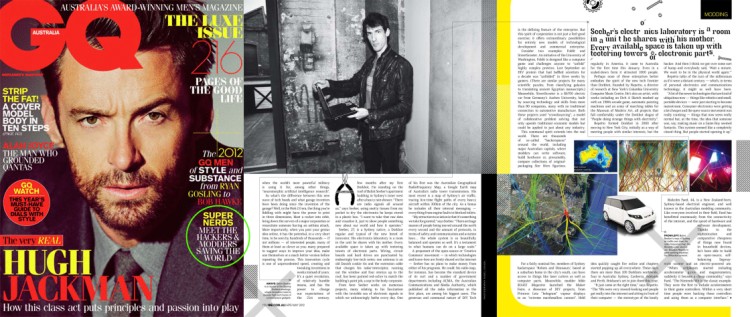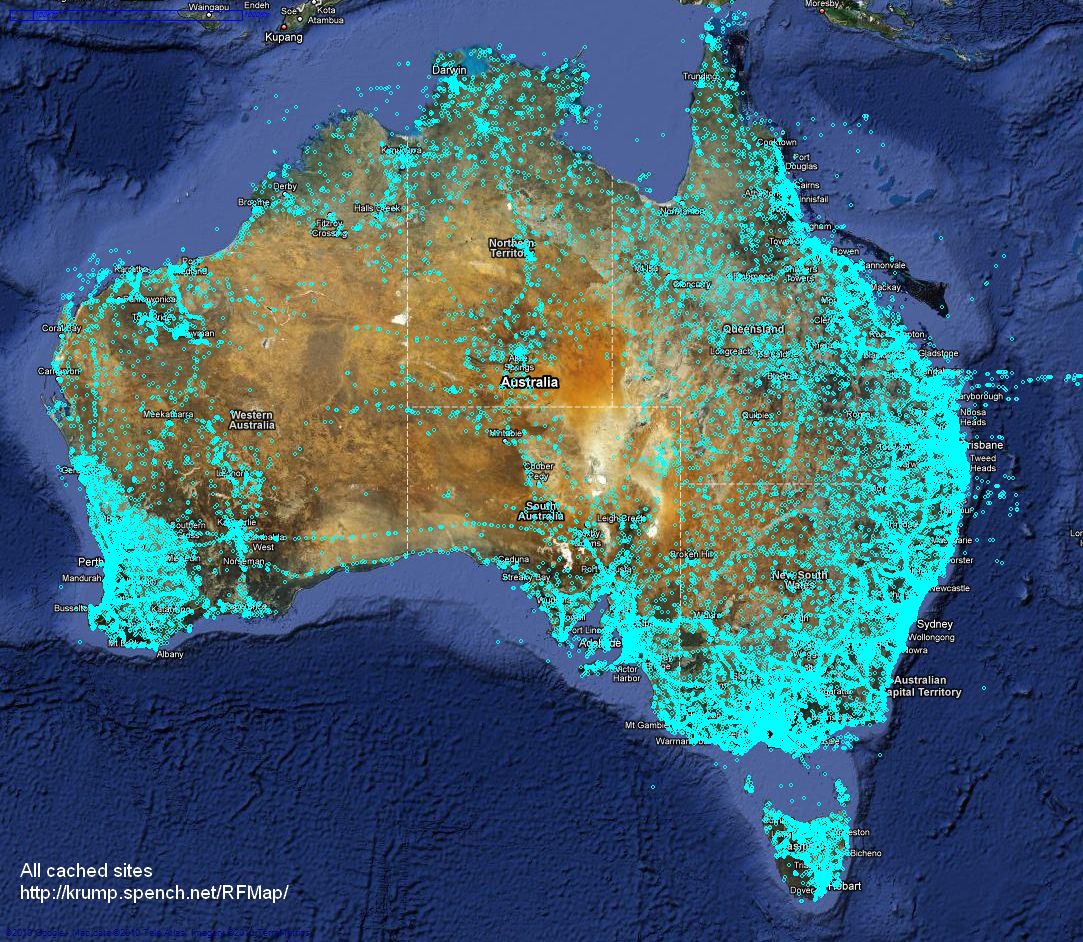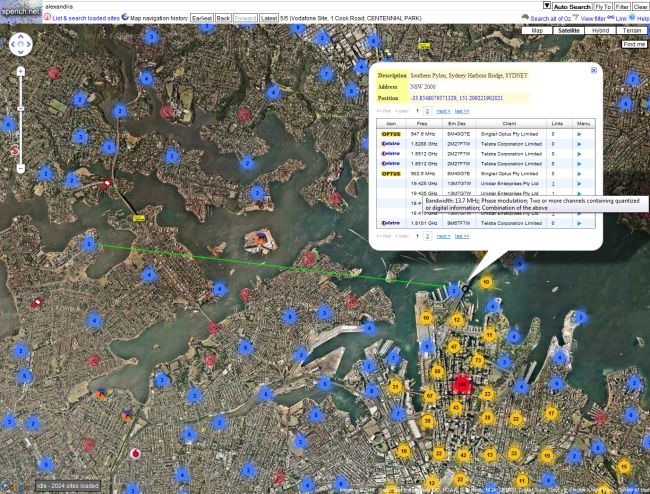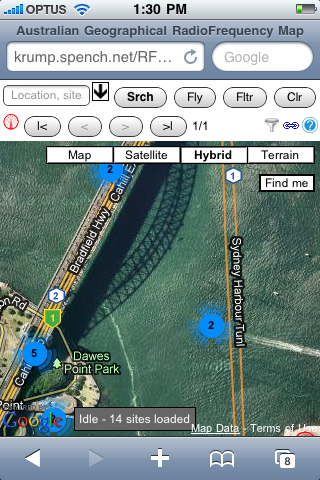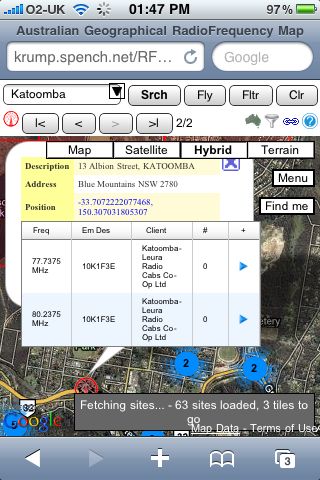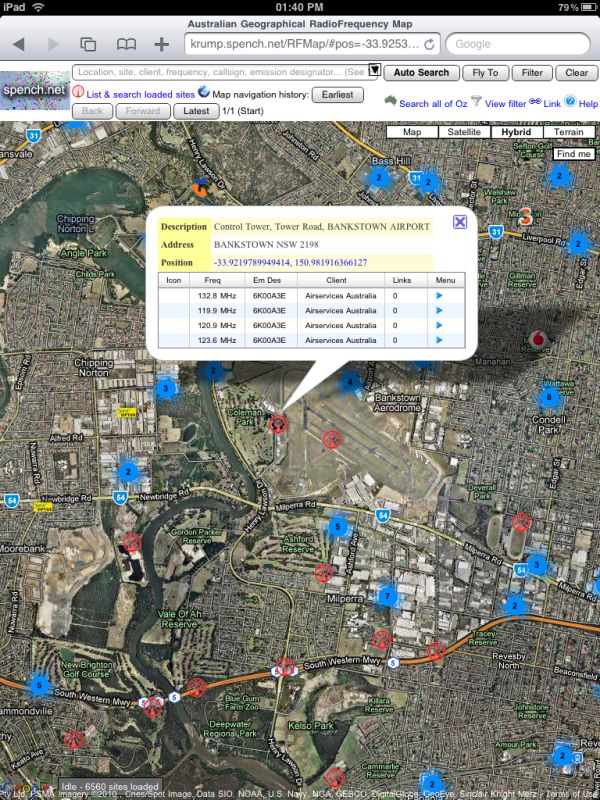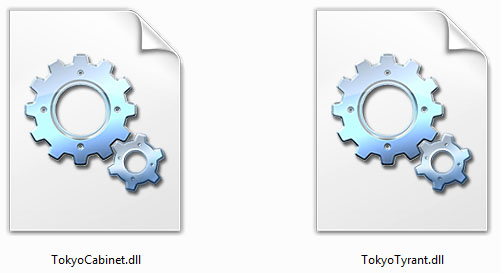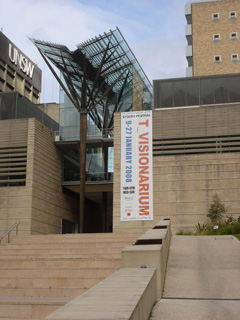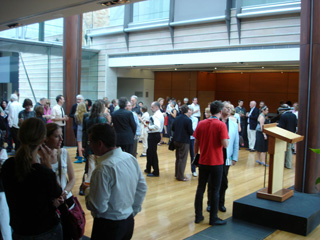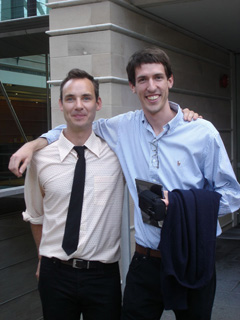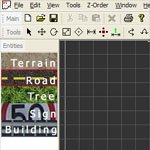Publically available
BorIP
Sun, 22/05/2011 - 20:15 — balintBorIP* is a software solution that abstracts a streaming SDR interface to make it available over an IP network, allowing the SDR hardware to be physically removed from the front-end processing computer(s). The goal for BorIP is to keep the protocol simple.
For instructions, help and more technical information (such as the complete protocol breakdown), please visit the wiki page.
You can get the server, along with the ExtIO_USRP plugin, from the download page.
Winrad ExtIO input for USRP
Sun, 22/05/2011 - 20:02 — balintWinrad and its forks (HDSDR & WRplus) are software radio interfaces that run on Windows. They support a number of SDRs as input sources (known as ExtIO plugins). There was previously one for the USRP, however I decided to write a new one with UHD and legacy support, and much more (e.g. remote control and streaming over a LAN).
Australian Geographical RadioFrequency Map
Tue, 15/06/2010 - 23:55 — balintRFMap featured in GQ Australia (April/May 2012)!
You can also have a listen to this podcast of a radio interview I did on with Ian Woolf on 2SER:
"Balint Seeber Mashed Up Radio"
UPDATE: I have written an extensive guide with plenty of screenshots explaining how to use the map to the full. The contents of the guide can be found to the left of this text (at the top of this page's left-hand column). Read it if you wish, or dive right in. Alternatively, open two tabs/windows and go through the guide while trying it out live.
The Australian Geographical Radio Frequency Map is a site that overlays all registered RF transmitters on top of Google Maps. Generic antenna sites are shown with the red RF icon, while mobile base stations are represented by the carrier that operates from the site (often multiple carriers do, but currently the first is chosen when determining the icon). A mouse-over will give you the site's description, and a click will tell you who broadcasts from there, and at what frequencies. Much more is to come...
Although people by-and-large won't be terribly interested in the positions of every antenna in the country, they might be interested in checking how close they are to their nearest mobile base station, how good a carrier's coverage is in a particular area, and for prospective spectrum purchasers to assess possible interference, etc. However, having said all that, it is primarily in the ham spirit.
Here is every transmitter site cached in the database, which is fully searchable from the web interface (shown below) by location, site name, client details, frequency range, emission designator and callsign:
Here is a browser preview:
Here is what it looks like on the iPhone:
And on the iPad:
NISRP: the Non-Intrusive Song Rating Plugin for Winamp and iTunes
Thu, 04/03/2010 - 18:39 — balint| UPDATE: NISRP has now been added to the offical Winamp plugin catalogue! |  |
More information is available on my wiki.
Making your iPhone look like a NMEA GPS receiver with gpsd and WiFi or Bluetooth
Wed, 27/01/2010 - 12:36 — balintTRY IT OUT: If you wish to test the front-end interface on your mobile device, click here and tap 'Find' (not 'Enable'). This is handy if you want to check how well your location service is working, and to get raw lat/lon values! Please note: this will not allow you to send the position updates to your computer - this is purely for your testing only.
UPDATE 2: I have enhanced the web interface further so it supports time-outs and the ability to clear the update backlog that is accumulated following a timeout (see new screenshot below). Thank you to Ryan K for additional testing.
Unfortunately there appears to be a bug that is manifest under Linux: if gpsd is run with no clients connected and updates are sent from the phone, the script will lock up when attempting to send updates to gpsd after an arbitrary period of time. In the short term, this can be fixed by connected to gpsd and sending it a command (e.g. the 'watch' instruction). If a client is connected to it (which should be the case in nearly all circumstances) this doesn't seem to happen. This behaviour has not been seen under Windows.
Preliminary tests on Mac OS X are reported to be successful. If installing gpsd via a package manager, be sure to disable auto-startup (via init.d scripts and/or hotplug, etc) otherwise the gpsd instance launched by the Python script will not be able to bind to the normal listener port and you will be left wondering why you're not getting any data (as you'll be connected to the wrong gpsd instance).
UPDATE 1: I have uploaded a new version of the package (new Python and HTML). The new features include:
- asynchronous updates (no more locking up Safari)
- batching of updates (which should solve the Bluetooth problem described below), and
- filtering of duplicate updates (you will see an asterisk * next to the 'Acc' value, as in the screenshot).
Many thanks to 'gabe' for testing! Also, please be aware that the HTTP server opens files from the current working directory of the Python process. If you're seeing 404s then your current directory is probably not the same as where the script is (you can check the current directory when it is printed out upon starting the Python script).
I was suprised to find that seemingly none of the dedicated GPS iPhone apps could stream your current location to a computer. Therefore I knocked up this simple solution, which uses a Python script to wrap up gpsd and make it think it's connected to a real GPS receiver that outputs NMEA sentences. The receiver is of course the iPhone, which uses Javascript (to retrieve location) and basic AJAX (to send the results to the Python script) all running in Safari. The page is served from Python (running on a computer) via WiFi or a tethered connection (Bluetooth or cable). Please note that Python and gpsd are not running on the iPhone - only the web browser is. This is what you would see in Safari once the page has been loaded from the Python web server:
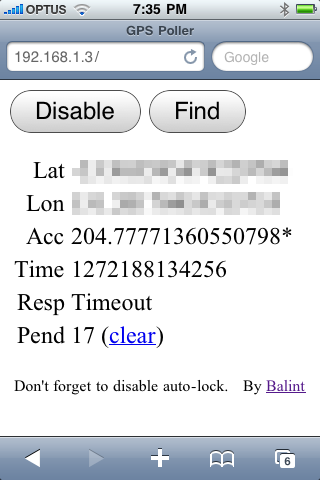
Patch for Linux Kernel Orinoco WiFi driver re-enabling original monitor mode with Prism II headers & packet power levels
Tue, 01/12/2009 - 11:18 — balintI was disappointed to find that the improved Linux Kernel Orinoco drivers do not report power levels via the standardised iwconfig 'monitor mode'. When the iwpriv 'monitor' mode was available, Prism II packets were sent from the driver to userland. These packets contained extra information reported by the hardware, such as per-packet signal & noise levels. I think having SNR measurements is one of the most useful features of Kismet, as it allows to you roughly determine the direction to a network based on signal power. Therefore I took the old-style monitor mode code and transplanted it into the modern driver (in kernel version 2.6.23.9). Now both monitor modes are accessible. Kismet picks the older one (Prism II packets) first, before trying the standardised mode.
Without too much fuss, the Kismet SNR meter is back - for example:
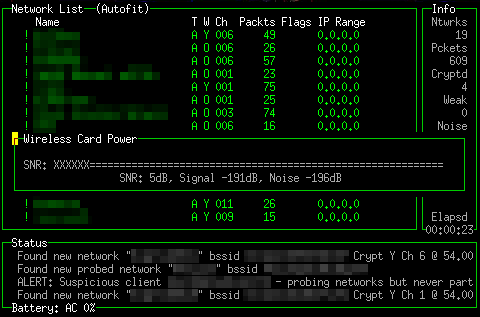
TokyoCabinet and TokyoTyrant DLLs for Windows MSVC
Fri, 16/10/2009 - 14:01 — balintTokyoCabinet (TC) is a wonderful open-source key-value pair database library by Mikio Hirabayashi, part of his TokyoProducts suite. TokyoTyrant (TT) is the networked portion of it (i.e. the database client & server). Since I am working on a project in Visual Studio under Windows and set out to use TC over the network, I needed to access the TT client API with MSVC.
Presentation of the Eyesweb Visual Programming Language at Dorkbot Sydney
Wed, 18/03/2009 - 17:38 — balintI a gave presentation at Dorkbot Sydney (24/02/2009) on the Eyesweb Visual Programming Language. It was an overview that exemplified some cool things you could do using live video, iPhones (with accelerometers), mrmr, OSC, and multiple Eyesweb nodes on a network.
Video Behind the Scenes
Thu, 10/01/2008 - 12:22 — balint1000 videos can be seen playing back simultaneously!
This is a preview video produced by iCinema:
Events
Thu, 10/01/2008 - 12:07 — balintT_Visionarium was officially launched on 08/01/2006 as part of the 2008 Sydney Festival. Please read my blog post about it. Here are some pictures:
The festival banner:
Crowd before the speeches:
The digital maestros (Matt McGinity & I):
Appearances in TV News
Thu, 10/01/2008 - 11:40 — balint09/01/2007 - SBS World News:
August 2006 - Channel Nine News:
T_Visionarium (AKA Project TVisionarium Mk II)
Thu, 10/01/2008 - 11:35 — balintThis series of pages summarises the contribution I made to TVisionarium Mk II, an immersive eye-popping stereo 3D interactive 360-degree experience where a user can search through a vast database of television shows and rearrange their shots in the virtual space that surrounds them to explore intuitively their semantic similarities and differences.
It is a research project undertaken by iCinema, The iCinema Centre for Interactive Cinema Research at the University of New South Wales (my former uni) directed by Professor Jeffrey Shaw and Dr Dennis Del Favero. More information about the project itself, Mk I and the infrastructure used, is available online.
I was contracted by iCinema to develop several core system components during an intense one month period before the launch in September of 2006. My responsibilities included writing the distributed MPEG-2 video streaming engine that enables efficient clustered playback of the shots, a distributed communications library, the spatial layout algorithm that positions the shots on the 360-degree screen and various other video processing utilities. The most complex component was the video engine, which I engineered from scratch to meet very demanding requirements (more details are available on the next page).
Luckily I had the pleasure of working alongside some wonderfully talented people: in particular Matt McGinity (3D graphics/VR guru), as well as Jared Berghold, Ardrian Hardjono and Tim Kreger.
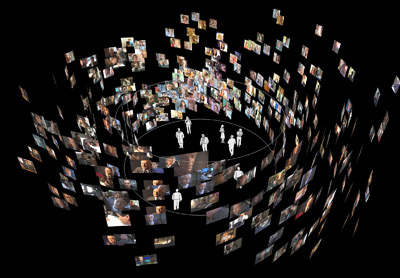
Atmel at76c503a Wireless USB Adapter
Mon, 13/08/2007 - 11:53 — balintThis started with my desire to build a Woktenna.
Of course you can't very well put a PCMCIA wireless card at the focal point of a cooking wok!
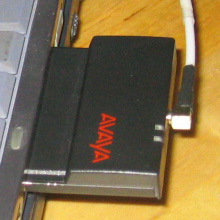
So the alternative is using a USB WiFi adapter that can hang on the end of a USB extension cable and
introduce minimal analog signal loss and USB is digital!

Despite the fact is says "Linux compatible" on the box, it wasn't immediately possible to do what I wanted to do,
which is: monitor mode!
With monitor mode, I'd be able to point the woktenna around and pick up the beacon frames of distant APs.
I found two drivers available for this device:
one over at BerliOS,
and the other at SourceForge.
Genetic Programming: 3D Visualisation in Python
Mon, 30/07/2007 - 17:36 — balintThis is a GUI frontend to the genetic programming assignment given in this subject. The aim is to evolve a wall-following robot. The program provides multiple visualisations of the process. It was written with Janice Leung - many thanks for the beautiful widgets! Developed on (but not for) Linux using Python and its bindings & add-ons: PyQt, PyOpenGL, PIL and psyco. README available. It contains more information about the code used to render the robot & world.
 |
 |
 |
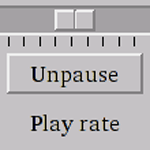 |
Broadcast Flooder & Network Bandwidth Hammer
Mon, 30/07/2007 - 15:54 — balintMy friend Rafal Kolanski and I decided one night to put our gigabit network cards to the test and measure how quickly a user-space program could generate packets and how many would be discarded before the destination's NIC would receive them. Therefore we wrote a small Linux program to complement my Broadcast Flooder, which I had previously written to test other aspects of my network.
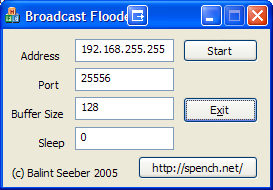
Counting Lines of Code
Mon, 30/07/2007 - 15:09 — balintAlthough there exists a plethora of programs that count lines of code, I thought I would write my own. It is designed to analyse C/C++ code and ignore whitespace, // and /**/ comments (both the single and multi-line sort). It also counts the number of FIXME's one has left in their code. Other languages (eg: Javascript, assembly) that also use such commenting conventions are compatible too.
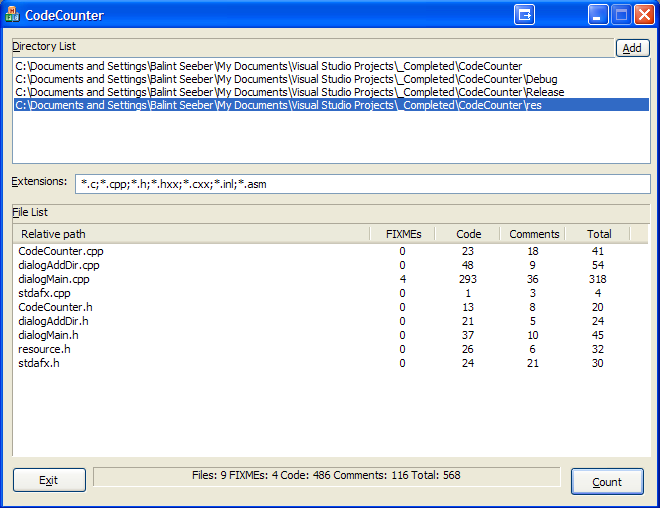
libavcodec & ffdshow
Mon, 07/05/2007 - 18:34 — balint
To perform these experiments, I needed to be able to tweak the source code of a video decompressor. Since I do most of my development on the Windows platform using Visual Studio and I wanted to support as many codecs that use motion compensation, my options became limited. libavcodec in ffmpeg is the library to encode and decode any of a host of video and audio codecs. There is one catch however: it is written in C using C99 features and VC does not compile C99. Therefore I (back-)ported libavcodec to the Windows platform so I could use a GUI debugger and quickly learn the structure of the code. This would allow me to make quick changes and evaluate the results.
WebRadio
Fri, 04/05/2007 - 14:20 — balintSKIP THE CHIT-CHAT, LET ME USE IT*!
* Please note: WebRadio is only available when I have the computers and radios switched on. (And I don't usually do this as electricity does not grow on trees and fire is bad. Did I mention I have to pay for uploads too?) If it says it "Can't connect to the server" and you'd like to give it a whirl, please do not hesitate to email me (bottom of front page) and I'll switch it on for you.
TVisionarium Mk II (AKA Project T_Visionarium)
Tue, 01/05/2007 - 16:13 — balintAn inside view into iCinema's Project T_Visionarium:
(We tend to drop the underscore though, so it's referred to as TVisionarium or simply TVis).
This page summarises (for the moment below the video) the contribution I made to TVisionarium Mk II,
an immersive eye-popping stereo 3D interactive 360-degree experience where a user can
search through a vast database of television shows and rearrange their shots in
the virtual space that surrounds them to explore intuitively their semantic similarities and differences.

